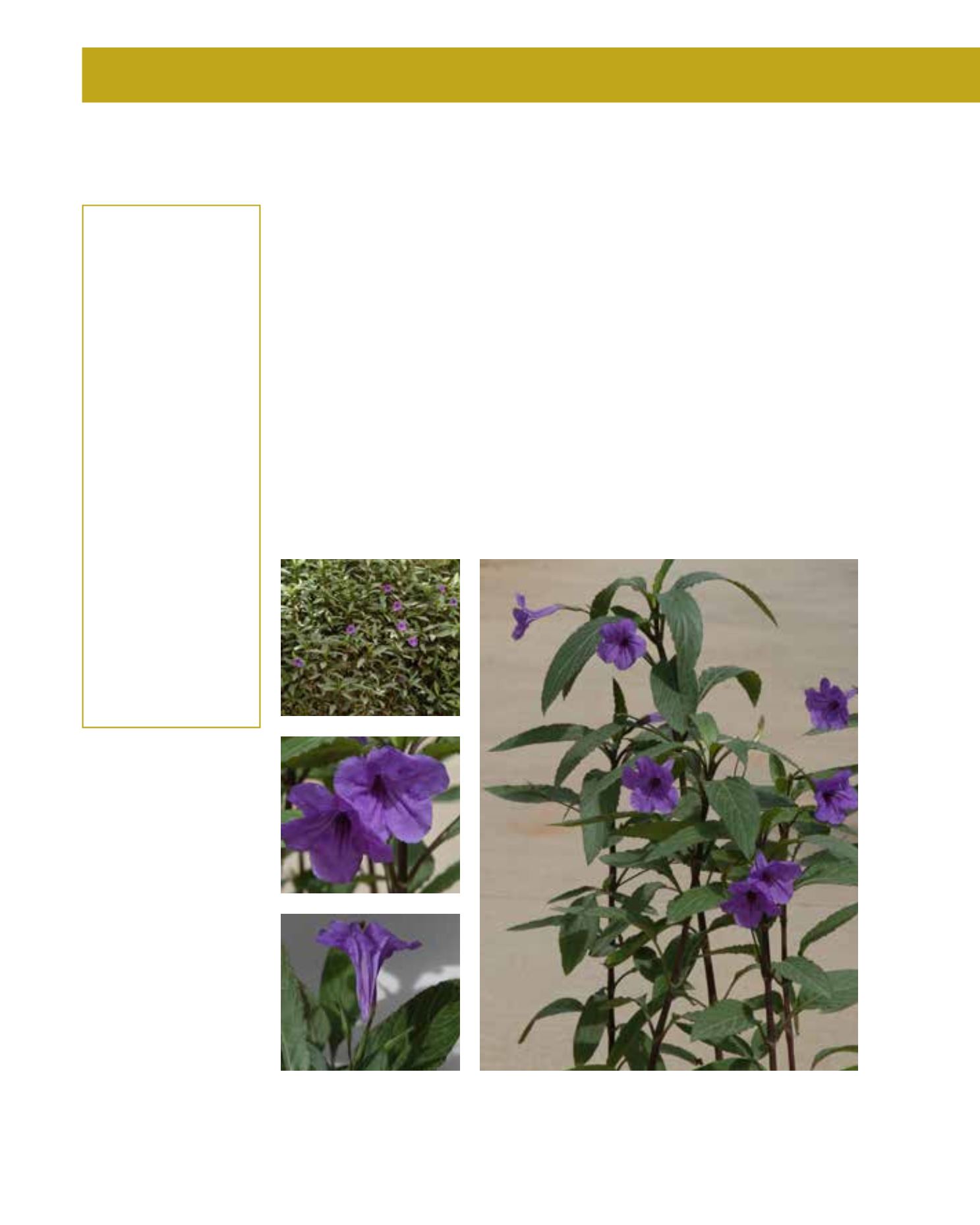

GENERAL
Origin
:
sub-tropical,
tropical
Humidity
:
semi-arid, semi-
humid, very
humid
Propagation :
sowing and
pricking out,
cuttings, division
Maintenance :
high
CONDITIONS
Urban climate :
resistant
Dessication :
vulnerable
Stagnant water :
vulnerable
Irrigation
:
high
Salinity/ppm :
moderate (2000
ppm)
Hardiness
:
0°C
SHAPE
Type
:
perennial
Height
:
0.8 m
Spread
:
0.6 m
Foliage
:
evergreen
FLOWER
Colour
:
lilac, light violet
Size
:
5 cm
Period
:
May - October
FRUIT
Type of fruit :
capsule
Fruit size
:
3 cm
Popping Pod is an erect, herbaceous perennial, native to Central America, named for its habit of
dispersing its seeds from pods when they burst open. In its habitat, it grows on woodland edge
and meadows on loamy, in wet soils on the edge of rivers, as well as on wasteland. Not very com-
mon in Arriyadh, it is being seen more and more in parks and gardens. It is a fast-growing, dense
subshrub with many hairy stems, growing up to a height of 80 cm. The simple, linear leaves are
opposite and elliptic; the stem is quadrangular and often purplish-black. Its fleshy, rhizome roots
help it to spread vigorously. Violet-blue flowers are produced prodigiously throughout the year.
They are funnel-shaped and up to 5 cm long. The ripe brown fruits, up to 3 cm long, are capsules,
each with 7–8 seeds that explode with a bang when wet, hurling the seed away. Plants require full
sun to light shade, and well-drained, sandy soil. Leaves may be blackened by frost in Arriyadh,
but they will grow back again. Plants require regular irrigation, although some drought is tolera-
ted. Propagation can be carried out by division, seeds and cuttings. Popping Pod’s bright flowers
and dark-green leaves make it an attractive addition to private gardens and public open spaces,
where it is good for mass planting. However, R. tuberosa can quickly begin to look straggly and,
with frost damage, unsightly. Although not prone to insects or diseases, it is a high-maintenance
plant requiring regular trimming and cutting back in late winter to encourage new growth.
263
Ruellia tuberosa,
Acanthaceae
Popping Pod,
Bluebell
















